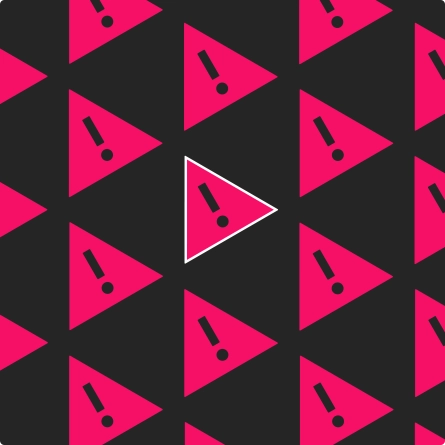Boost Enrollments With a Targeted Higher Ed Web Content Strategy
Learn how to grab the attention of prospects — and move them through your college or university conversion funnel — at every stage of the user journey. Want more? Download our free guide: The Higher Ed Marketing Playbook.
When it comes to optimizing college and university website experiences, marketing teams focus on three primary groups above all others: prospective students, parents, and donors. These audiences provide the funding fuel that makes the higher ed business engine run.
As you already know, words can be powerful marketing tools. But crafting web content that spurs these users to take mission-critical actions — like hitting the “Apply” or “Donate” buttons — at just the right moment is equal parts science and art form.
Creating conversion-oriented content that speaks directly to your higher ed web audiences — and moves them along the conversion funnel from awareness to action — requires a deep understanding of their needs, their user journeys, and their opinion of the ideal higher ed digital experience.
If you’re unsure what your prospects’ journeys look like or how they fit into your university’s content strategy, don’t waste another day guessing. Here, we explain proven strategies you can use to leverage meaningful messaging to reach your organization’s goals.
Understanding Users & Their Content “Love Language”
Our higher education web design agency has worked with dozens of universities nationwide, and we often find that, for a variety of reasons, their marketing teams don’t have a firm grasp on key audiences or the content that helps them make decisions and complete conversions as they move through their site.
It should come as no surprise that prospective students, parents, and donors require different types of content, information, and answers before taking action on your website. They each come to the table with different needs, motives, and aspirational outcomes, and your content needs to be written, organized, and disseminated in a way that takes all of those factors into account.
Before You Write: Clearly Define Your Target Personas
Before you dive into copywriting, it’s crucial to clearly define your target audience personas:
- Who are your typical user types?
- How did they land on your site?
- What are they there for?
- How well are you meeting their content needs — and where are you falling short?
- Did they get the information they were seeking before they left, or did they get frustrated by a lack of relevant content and make a quick exit?
- What is their mindset? Are they excited? Anxious? Overwhelmed?
- How many times will they visit before taking an action?
The answers to these questions can be found in your website analytics and by conducting primary audience research, including user surveys, interviews, or focus groups. If your team bandwidth or budget is limited, there is an abundance of secondary research, including higher ed industry reports and whitepapers, to help you identify user demographics, motivations, pain points, and goals.
Let’s take a closer look at some of the key questions you’re looking to answer.
PROSPECTIVE STUDENTS
Where do they fall on the spectrum of “just looking” to “ready to apply”?
How much have they already decided about the kind of school or setting they’re interested in? (e.g., Do they have an idea of their major? Do they want to be in a city, suburb, or rural location? Are they looking for a big vs. small school?)
Are they experiencing any confusion about university “basics” like majors/degrees offered, admission requirements, or how to schedule a visit?
Do they need more information about tuition? Student life? Campus culture?
Do they clearly understand where to look on your site for scholarships, grants, and other forms of financial aid?
Is the opportunity to play a sport, engage in Greek life, or study abroad a make-or-break decision point for them? If so, are you providing enough clarity about their options?
Do they need to speak to an adviser or peer about more personalized questions?
PROSPECTIVE PARENTS
How involved in the choosing/applying/paying process are they?
Are you addressing their concerns about tuition costs? Potential career paths? Job search assistance?
Do they have concerns about living and dining options? Campus safety?
Do they need to speak to an adviser or attend a parent information session to gain a greater sense of confidence in moving forward?
PROSPECTIVE DONORS
Do they need to know specifically where their donations will go before they commit?
Are they more likely to make a single large donation or recurring smaller donations?
Would reading case studies about how past donations have improved the institution spur them to action?
When applying this questioning process to each of your audiences, don’t overlook nuances in narrower subgroups, such as prospective students that can be divided into undergrads, grad students, transfer students, and international students.
Of course, your website can never be all things to all people at once. However, by defining your target personas and their motivations, you can craft content that speaks directly to them and adds meaning to the path they take through your site.
Meet Users Exactly Where They Are — Not Where You Want Them to Be
There are three typical stages that college and university prospects go through in their user journeys: awareness, consideration, and decision. The sample below shows how these stages might pair up with the content needs of a typical prospective college student.
Awareness Stage Content
The awareness stage is where you first capture the attention of potential students, parents, or donors and introduce them to your institution. At this stage, the user likely doesn’t know much about your school, your offerings and initiatives, or how they match their personal goals. Your top priority is to educate them at a high level, establish your credibility as an institution, and entice the user to learn more. Your content should make users feel welcome and included, as if they could see themselves (or their children) in your spaces.
Quick hits of engaging and informative content that showcase your expertise, campus culture, student life, and success stories are vital at this stage, including:
- A digital viewbook
- Authentic imagery featuring real students, staff & faculty (read: minimal to no stock photography)
- How well are you meeting their content needs – and where are you falling short
- Compelling Headlines
- Impactful statistics & infographics
- Current student & parent testimonials
- Social media feeds
- Videos
By creating content that resonates with your audience at this stage, you’ll lay a solid foundation for the rest of their journey.
Consideration Stage Content
Now that you’ve successfully captured the attention of your audience in the awareness stage, it’s time to nurture their interest and guide them through the consideration stage. This stage is where potential students, parents, and donors dig deeper, actively evaluating their options. Perhaps they are already placing your campus life or academic programs up against those of another school.
To craft effective content for this stage, focus on providing in-depth information about your institution’s programs, courses, faculty, and any unique features that set you apart. This includes outlining information about tuition, scholarships/financial aid, or even comparisons against similar institutions or programs.
Consider creating the following assets to help your audience make informed decisions:
- Course offerings
- Academic requirements
- Detailed blog posts
- Webinars, podcasts & live chats
- Financial calculators
- Virtual campus tours
- Lifestyle content
- Campus tour materials (schedules, event overviews & maps)
- Application requirements checklists
Including stories by and about current or former students is another great way to add a deeper layer of credibility and showcase real-life successes.
The goal of this content should be to showcase your institution’s expertise and demonstrate how it aligns with the specific needs and aspirations of your target audience. By knowing your audience, you can answer their questions by providing valuable and relevant content that will further engage and resonate with them and increase the likelihood of conversion.
Decision Stage Content
As your user moves toward a decision, they need refined content that supports their choices and spurs action. At this stage, potential students, parents, and donors are considering all the information they have on hand to confirm the unique benefits and value your institution offers.
Consider creating content such as:
- Alumni stories (career paths, achievements, publications & awards)
- Interactive tools that showcase the outcomes and opportunities your institution provides
- Logistical information about the steps for applying, touring & donating
- Strategic plans & annual reports
This is your chance to convince your audience that choosing your institution is the right decision for them. You want your website to provide clear call to action (CTA) buttons that help the user know exactly what their next steps should be. Common CTAs in this stage include actions such as: Apply, Enroll, Register for a Campus Tour, etc. The last thing you want is to leave a prospective student without any action to take, forcing them to leave your website and find what they’re looking for elsewhere.
Stay in It to Win It for Conversion Success
Content is not a quick-win solution. It requires a significant investment in time, team resources, and personal bandwidth to gain traction. However, unlike short-term paid marketing and advertising efforts, investing in a solid content marketing foundation for your university is a more sustainable, long-game investment that will return results over time when executed properly.
To measure success, you need to set clear goals and define what a conversion looks like for your institution: an increase in enrollment numbers, donations, scheduled campus tours, or a wide array of other actions. Using analytics tools to help track and measure the impact of your content, such as click-through rates, downloads, and engagement metrics may be a good place to start.
Consider periodically testing specific content, like your homepage hero message, individual testimonials, videos, and key graphics — as well as deploying landing pages targeted to specific audiences — to see how different layouts, copy, and media perform.
Regularly review the associated metrics and adjust your content strategy accordingly. By measuring conversion success, you’ll be able to see the tangible results of your content efforts and make data-driven decisions for future tactics.
Need More Help?
We’ve served as a digital agency for colleges and universities all over the U.S., helping to refine their digital presence and meet institutional goals. Download our free guide to learn more about building a higher ed content strategy that converts — and schedule a free consultation to learn how we can help you meet your institution’s growth goals.



